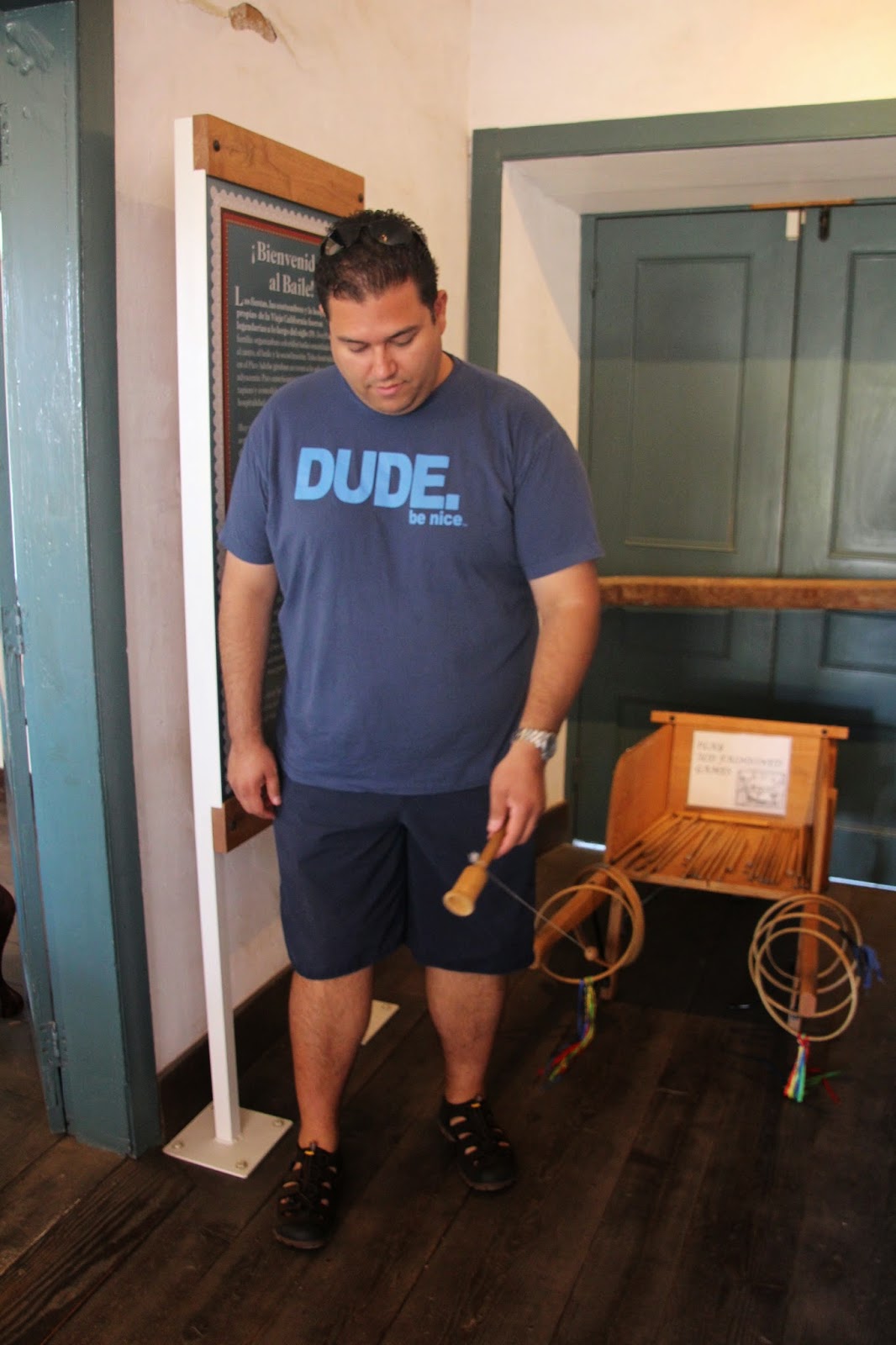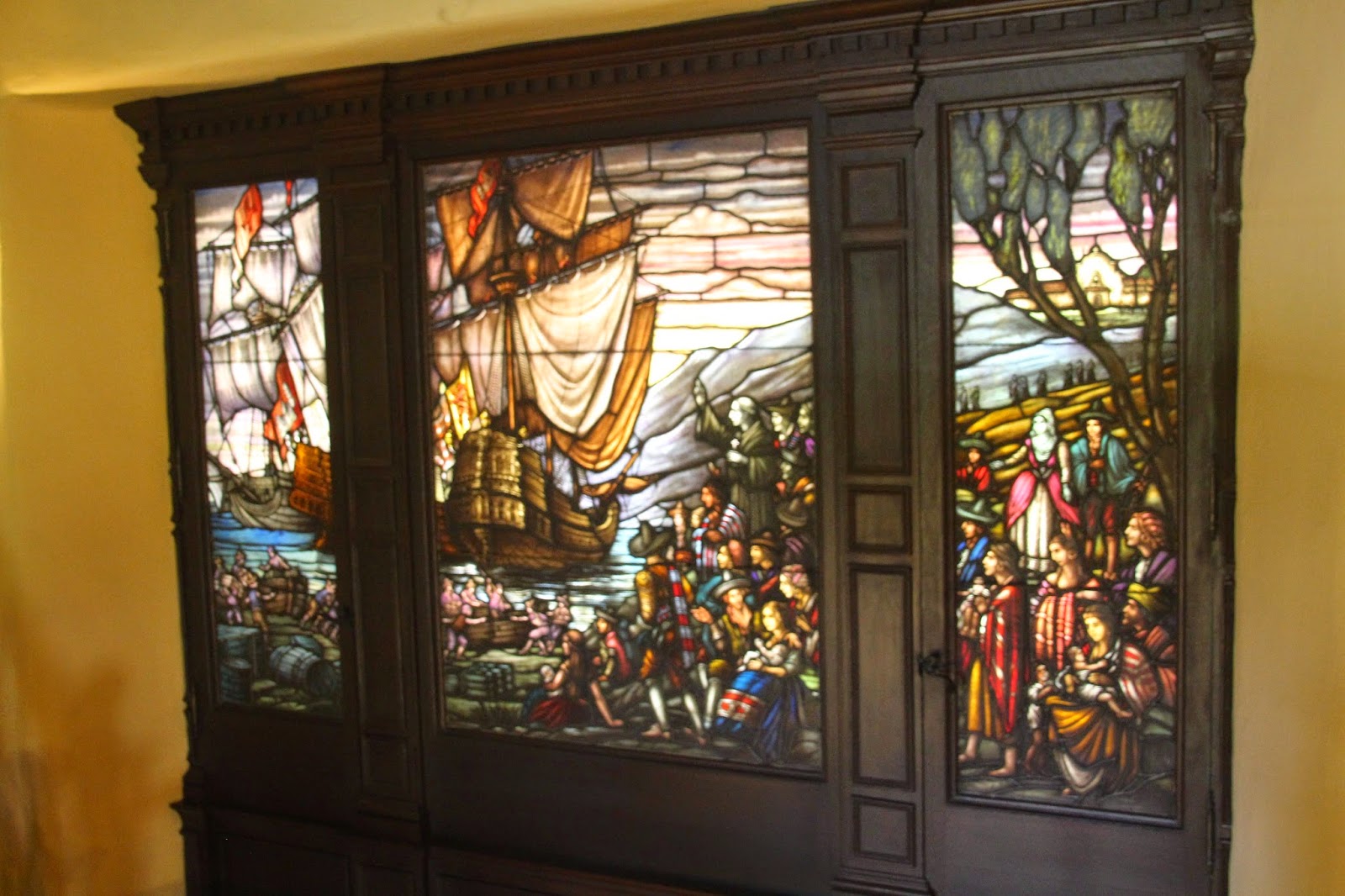
This was the site where the original buildings were for Mission San Gabriel. The fathers abandoned the location due to flooding. We did see the site they chose to do the full mission construction in our last adventure.
Next we headed to the home of Pio Pico or the Casa de Governor Pio Pico (CHL 127).
Pío Pico was the final Mexican Governor of California. He was born at the Mission San Gabriel-- just a little ways away from Whittier, the location of this site. His parents came to California with the Anza Expedition.
Pico became a soldier and traveled, charting and colonizing parts of California.
He was given a land grant in San Diego, but later got a larger grant of land with his brother in the Santa Margarita region (where the house is currently). He was governor in 1832 for 20 days. Later he led a coup that ousted the governor in 1845, and eventually inherited the position again. He remained the governor until the United States took over in 1846.
He was instrumental in helping Los Angeles grow and prosper-- even selling most of his property around 1870 to finance the Pico House-- the grandest hotel in Los Angeles! Pico sadly died nearly broke, but his legacy can be found all around Los Angeles.
The parks department has taken over the home and done a beautiful job restoring it! It is lovely that all of the descriptions of items are in Spanish first and then English-- it seems fitting for Pico to do it this way!
They have a great deal of hands on exhibits...
which are all free to visit!
The rooms have been restored and the guides are very friendly and helpful.
They have one of the rectangular pianos that we have become accustomed to seeing in old California homes...
We counted Pico's keys and he has 50-- which shows his wealth!
One of Libi (and Ron's) favorite parts of the house was the cart full of period children's games to try.
Ron showed Libi the cup and ball game...
which she tried and nearly took my eye out.
The grounds have other points of interest and they have special events where folks dress in costume and do reenactments.
It would be fun to return and explore more of the mansion.
We continued our adventure going deeper into Whittier to the Reform School for Juvenile Offenders (the Fred C Nelles School) CHL 947.
This school for juvenile offenders was in operation for 113 years before being closed in 2004. It was interesting to try to convey to Libi who lived and went to school here.
I found a fascinating video about the history of the school, you can view it by clicking here.
While watching the video we learned several things about Whittier and the school, so it's worth the 15 minutes or so to watch.
Just a hop, skip and a jump away is the Paradox Hybrid Walnut Tree (CHL 681).
This mammoth tree was planted in 1907 by the University of California Experiment Station. Walnuts used to be big business here in Whittier apparently.
This tree is not only a state landmark, but a national one as well-- it is one impressive tree with its 14 feet in circumference with a branch spread of 100 feet!
Ron searched for any sign of nuts on branches or on the ground, but he couldn't find any-- it must not be walnut season.
Our final Whittier site was sadly put into storage in 1993 and still hasn't come out! The Grave of George Caralambo, aka "Greek George" (CHL 646) used to be memorialized on plaques behind Libi.
While Ron and Libi pause for a game of hide and seek in the park where this site used to be, I will tell you about Greek George:
George was hired by the War Department to lead a team of camels here that would carry loads to help construct wagon roads (you may recall a mention of camels back in the Drum Barracks). Sadly when the Civil War began the plan was abandoned and George was forced to release his camels into the wild. It is said that they roamed the area for the next thirty years.
Greek George lived on the land that is now Hancock Park, thanks to his friend Major Henry Hancock. He cared for his livestock and became a US citizen. One final interesting factoid about Greek George is that Tiburcio Vasquez was finally captured behind George's house-- apparently he had been using it for years as one of his hideouts between his rampages.
Our next site is one of the most interesting ones we have been to thus far, the Workman Home and Family Cemetery also known as the Homestead Museum (CHL 874).
We first stopped at the mausoleum which was built in 1919 and we ran into an old friend...
Governor Pío Pico is buried inside! We had no idea that we would be seeing him again so soon.
After a brief stop to say hello to the koi, we walked down to the museum.
Today they weren't doing the regular home tour, they were doing a white glove tour where they take you behind the scenes of the preservation of the home and all the artifacts they have there.
Libi was stuck like glue to our tour guide Michelle, eagerly watching everything she did.
We got to see their preservation room where they catalog and store their artifacts and the room where they repair and restore the artifacts.
My favorite was seeing all of the period books they have in storage-- there is nothing quite like a bunch of old books!
We will have to come back to tour the entire home-- since the few rooms we saw were very well done.
They also have a Roaring 20's party, which once Libi saw a short video about she is all set to return for!
Why is this site significant you may ask?
Mr. Workman organized the first wagon train of permanent eastern settlers which came to Southern California in 1841.
They built a simple adobe, which is still on the site today.
The family grew and expanded, remodeled the adobe, and gained more land.
The museum prides itself on showing you what life was like in California from the 1840's to the 1920's and how things changed over time.
Workman's daughter Laura married a man named Walter P. Temple who founded and built Temple City.
The Temple family also built the large home that we spent most of our tour in.
Thanks Michelle for the amazing tour-- we will be back!
To get a better feel for the site and the Workman/Temple families, you can watch the video from the beginning of the tour here.
We drove a short distance to Pomona to find the First Home of Pomona College (CHL 289).
This unassuming rock on the side of the street indicates where Pomona College first stood in 1887. The first classes were held in 1888 until the campus was moved to Claremont in 1889.
We have traveled all over on this adventure-- into Watts and Compton, downtown LA and Stockton, but we have never felt ill at ease, until today. The parts of Pomona we were visiting were very sketchy and gave me the heebie-jeebies!
Our final stop for the day was La Casa de Carrion (CHL 386).
This is a private residence behind a locked gate, so we got as close as we could without trespassing.
This adobe was built by Saturnino Carrion, nephew of Don Palomares whose adobe we had just seen. It was supposedly designed by an Italian architect.
The home fell into disrepair after Saturnino lost it, but is now being restored to its former glory. Apparently the home opens for tours on select holidays and by appointment for school tours.


















































































0 comments:
Post a Comment